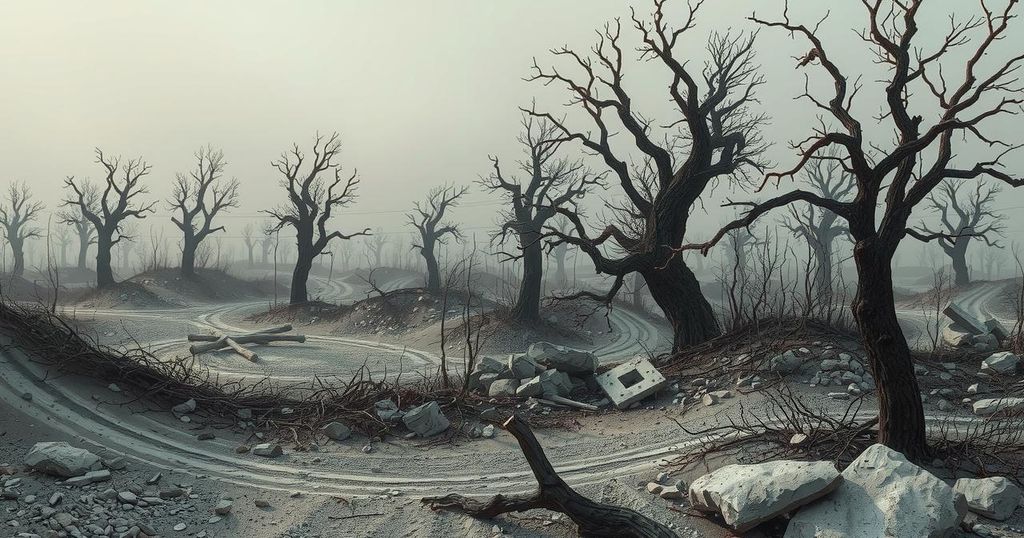The Transformation of Syria’s Civil War: A Year of Change and Conflict
The Syrian conflict has seen significant changes over the past 14 years, culminating in the ousting of President Bashar al-Assad by interim President Ahmad al-Sharaa. Despite calls for unity and peace from Sharaa, violence persists as conflicts between various factions and external powers complicate efforts for stability. Additionally, the threat of ISIS remains a critical issue as regional dynamics shift unprecedentedly.
The Syrian conflict, which began 14 years ago with widespread protests, has evolved into a complex and ongoing civil war. As of this past Saturday, President Bashar al-Assad’s regime has been succeeded by Ahmad al-Sharaa, marking a significant shift after years of violent struggle. Once a follower of ISIS and later a leader with Al-Qaeda, Sharaa now calls for peace, although violence persists across Syria amidst his attempt to establish control.
Assad’s rapid downfall, occurring in just 11 days this past December, highlighted the vulnerability of his government, particularly with allies like Iran and Russia distracted by conflicting interests elsewhere. While both nations had earlier provided military support to Assad, their inability to intervene effectively during this transition allowed for substantial territorial shifts in favor of Sharaa’s faction. The dramatic change has led some regions, including areas typically loyal to Assad, to embrace Sharaa’s interim leadership.
However, this change in power has not been without challenges. Reports of conflicting interests have arisen, leading to violent encounters that resulted in approximately 1,400 civilian casualties, primarily among the Alawite community. The unrest has called into question Sharaa’s commitment to pluralism and highlighted the fierce loyalty of Assad’s supporters who resisted the interim government.
In the midst of these developments, external powers continue to play significant roles. Iran’s influence in Syria has waned following Assad’s fall, while new armed groups inspired by Iranian factions have emerged, threatening further violence. Conversely, Russia remains focused on maintaining its military foothold in Syria and is actively engaging with the interim government, although its efforts may not yield immediate stability.
The Kurdish population in Syria, which represents about 10 percent of the nation, is another pivotal group amid the shifting dynamics. With historical ties to both Syria and neighboring Turkey, the Kurdish-led Syrian Democratic Forces (SDF) have negotiated with the interim government for potential autonomy. The complexities of these negotiations are compounded by the disinterest of some U.S. leaders, yet the U.S. remains involved through the SDF and its anti-ISIS operations.
On a different front, Israel has positioned itself strategically in southern Syria, seeking to bolster the rights of the Druze while countering Assad’s influence. Israeli strikes against Assad’s military outposts have raised concerns about further destabilization, as the temporary coalition between the interim government and the Druze could be undermined by external intervention.
The threat posed by ISIS persists despite its territorial losses. Under new leadership, Sharaa faces the challenge of reining in a resilient insurgency that has claimed numerous attacks in the past year. The shift in leadership has disrupted prior counterterrorism efforts by Iran and Russia, necessitating increased U.S. military operations against these groups.
The Syrian civil war continues to evolve, particularly after the dramatic change in leadership from Assad to interim President Ahmad al-Sharaa. While some regions express hope for a new governance model, ongoing violence and sectarian strife challenge this potential. External influences from Iran, Russia, Israel, and the United States, combined with the enduring threat from ISIS, complicate any attempts at establishing stability within the war-torn nation. As multiple layers of conflict remain unresolved, the future of Syria appears uncertain amidst these turbulent dynamics.
Original Source: www.newsweek.com




Post Comment